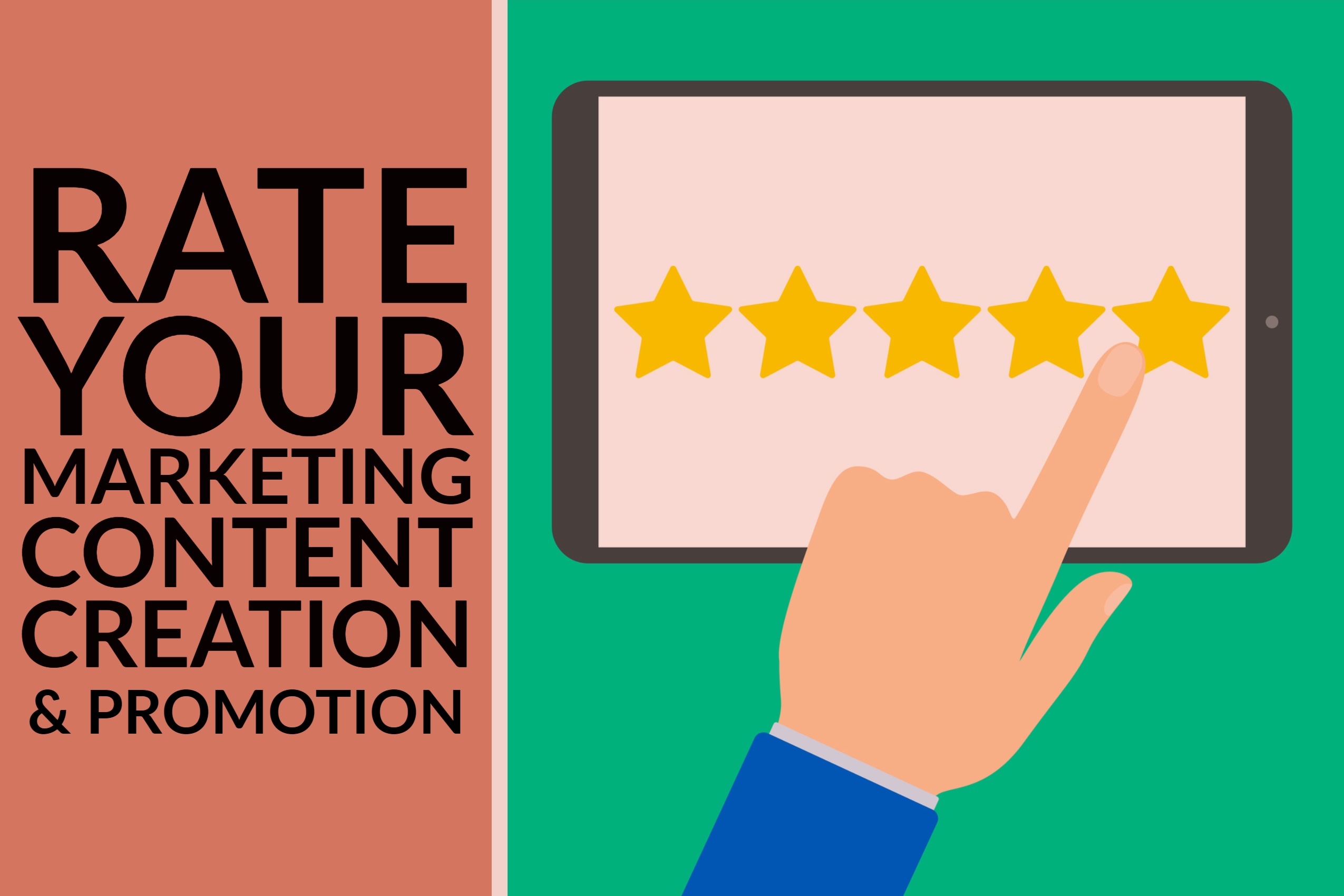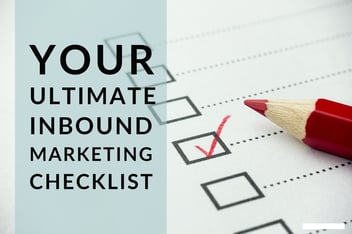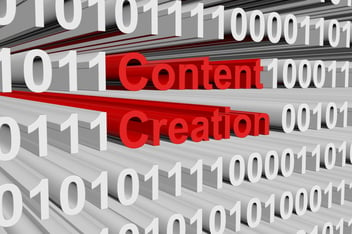Rate Your Marketing Content Creation & Promotion

Content creation is a key element in effective inbound marketing, but sometimes it can be almost overlooked as a less-important step in the overall process. While brands frequently bring in an outside perspective to develop new marketing strategies, or turn to third-party help in auditing strengths, weaknesses, challenges, opportunities and the competition, content creation — especially blog writing — is too often shifted to the least experienced members of the marketing team.
Unfortunately, when content creation lags or falls through the cracks due to a lack of expertise or lack of resources dedicated to creating the necessary volume of content, the rest of the strategy, from brand development to lead nurturing and sales enablement, fails to reach its potential. It may be time to take a step back and evaluate your content creation efforts to determine whether there are opportunities to improve and increase the effectiveness of your inbound marketing.
Your responses to the six statements below will help you find any gaps in your content creation planning and process in order to improve your overall inbound marketing results.
Score yourself on a scale of 1 to 5 for each question (1 is strongly disagree; 5 is strongly agree) and then tally up the score.
-
We have a written content strategy for each campaign message or topic to be addressed.
-
We create at least one downloadable asset for each campaign, preferably two.
-
We publish at least 16 blog posts each month, with topics including both that month’s campaign focus and past campaigns.
-
We create visual content (infographics and videos) as a complement and addition to our blog posts and downloadable assets.
-
We submit bylined articles to industry media to build thought leadership authority and name recognition for company executives.
-
We feel confident in the quality of our content creation and skill level of the writers and designers with whom we work.
And?
A perfect score would have been 30 — hopefully you were able to give yourself a grade of at least 15 points total, but even if you couldn’t, that just means there is opportunity for that much more growth in your inbound program.
Let’s look at why each of these areas is important. I’ll offer the main reason for each benchmark, plus links to resources to help you move toward the goal.
Written Content Strategies
Creating a written content strategy for each campaign message or topic you are going to address (and also for each channel you use) benefits your inbound marketing effectiveness in three ways:
-
It forces you to think through each topic and piece of content to be created, including the key messages to be relayed, customer personas to be targeted and a timeline for rolling out each campaign.
-
It helps you visualize ways of streamlining content creation across channels and departments, including repurposing material from public relations and marketing for use by the other department.
-
It ensures everyone is on the same page and understands the objectives, responsibilities, and deadlines involved.
One of the tools we use in planning our inbound marketing campaigns and content is a Campaign Planning Calendar — download the template here. You will also find useful tips in this blog post: How To Create And Implement A Cohesive Content Strategy.
Downloadable Assets (aka Offers)
Inbound marketing is focused on generating leads through drawing visitors to your business website. Step one is getting visitors to your site — that means creating content that is found through search or through promotion such as email and social media. Step two is to convert them into a lead, which requires an offer that prospects access by giving you their contact information. In many cases, that offer will be some type of downloadable content such as a report, ebook, template, video or calculator.
Without an offer on which to convert, your new website visitors will remain simply anonymous visitors, rather than leads who can be nurtured toward becoming customers.
Find ideas for downloadable offers in these posts:
Blog Publishing Volume
HubSpot has found that brands who blog at least 16 times a month (that’s 4 times a week) generate 4.5 times as many leads as those who publish 4 or fewer posts each month. It takes a steady flow of quality content to give your blog the SEO authority that brings it to the top of searches for your key topics.
Even if you can’t commit to four posts a week, setting a schedule and sticking to it will show that your brand is a consistent, reliable source of helpful information and insight.
Plan your blog topics so that they complement the rest of your marketing content for each campaign, as well as creating evergreen posts that can continue to drive traffic for months or even years.
Download a Blog Calendar Template here to plan out your posts, including key topics, what offers will be linked in each post, deadlines, and responsibilities.
Visual Content
Visual content — videos and infographics — have a much larger engagement rate than text only posts on social media and are also key to mixing up the formats of your business blog posts to appeal to a variety of visitors.
More than 9 in 10 consumers have watched an explainer video to learn about a product or service. And more than 40% of marketers surveyed by Venngage in 2017 said that infographics and other original graphics had the highest engagement of all visuals used.
Further reading on why you need to include visual content in your content creation process:
And once you’ve created videos, get the most mileage possible by using them in multiple ways — download our Maximize Your Marketing Videos Checklist for ideas.
Bylined or Contributed Articles
Including bylined articles contributed to industry media to your content campaigns can help build your brand awareness, authority and traffic. Rather than keeping a wall between public relations, which is usually the department tasked with press connections and contributed articles, bring PR into the fold and involve them in the overall communications strategy that encompasses both marketing and PR.
Bylined articles can complement your other inbound marketing content in several ways:
-
Rewrite bylined articles to use as downloadable assets and/or blog posts.
-
Promote the publication of bylined articles in blog posts that contain calls-to-action for related offers.
-
Promote those blog posts on social media to drive additional traffic to your website.
You’ll find a complete guide to writing and using bylined articles here: How To Get Your CEO Published.
Content Quality
With the constant flood of new content being created by brands, media, and individuals every second, your content has to offer something of value AND be professional in order to avoid simply being lost in the swirl.
That means that it may not be a wise idea to delegate blog writing to the newest hire or intern, or to rush content creation through the channels without taking time to proofread and edit.
Consider taking this quiz to gauge the quality of work you get from an outside firm, or download our Content Quality Report Card for a review of the characteristics of great inbound marketing content.
These posts offer additional insights into getting the best quality content from your team:
I am certain you can find opportunities within your content creation to take the next step and give your inbound marketing lead generation a boost — we all have room for improvement, right?
If you want to do a review of other aspects of your inbound marketing program, download our full scorecard, which also digs into questions of strategy, content promotion, lead nurturing, sales enablement, measuring and reporting. You’ll find it here: Rate Your Inbound Marketing Program. Let me know how you scored, and which areas you want to learn more about — I’ll be glad to share insights and links to help.
-1.png?width=1652&height=294&name=Jones(RGB)-1.png)











